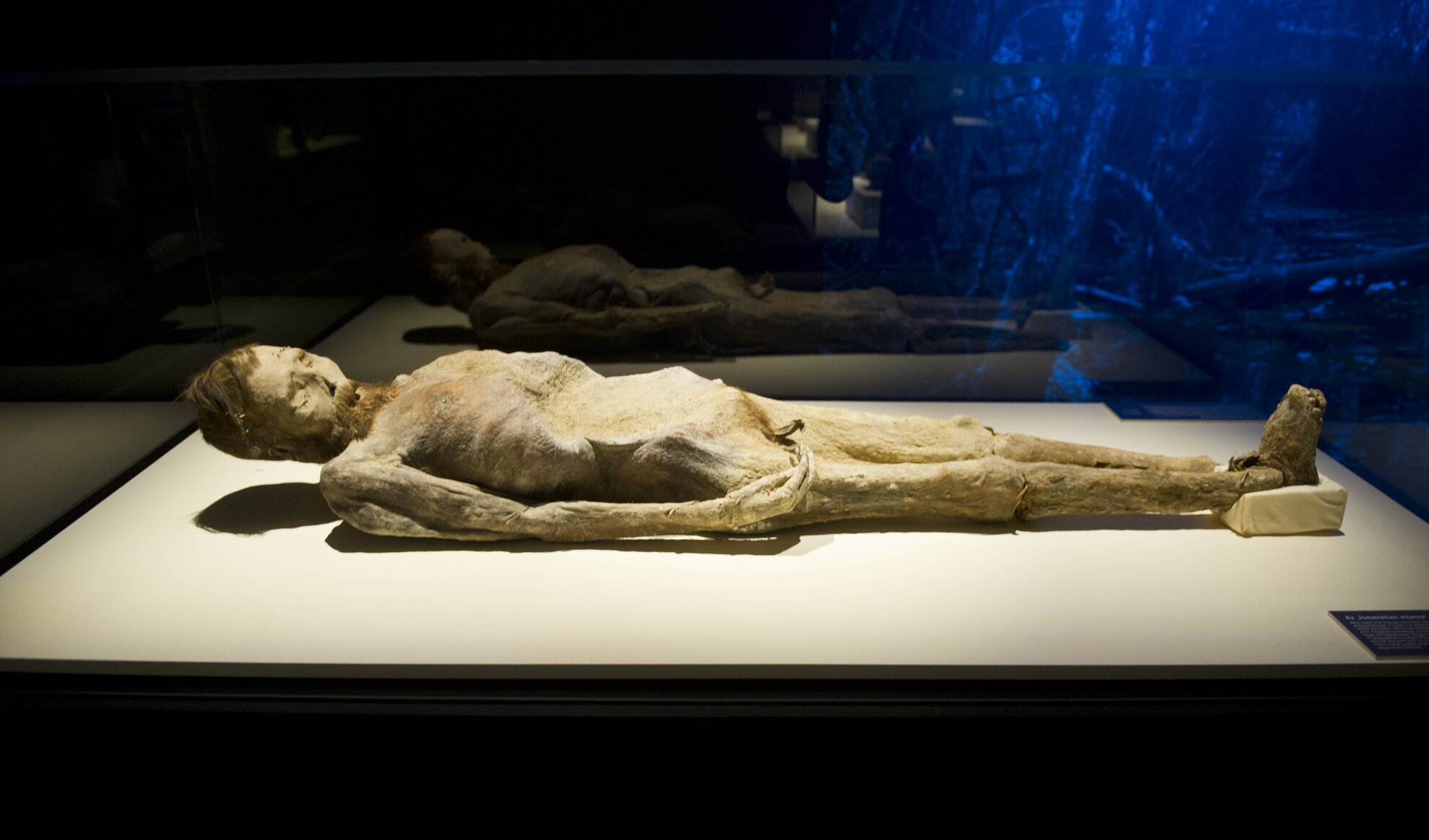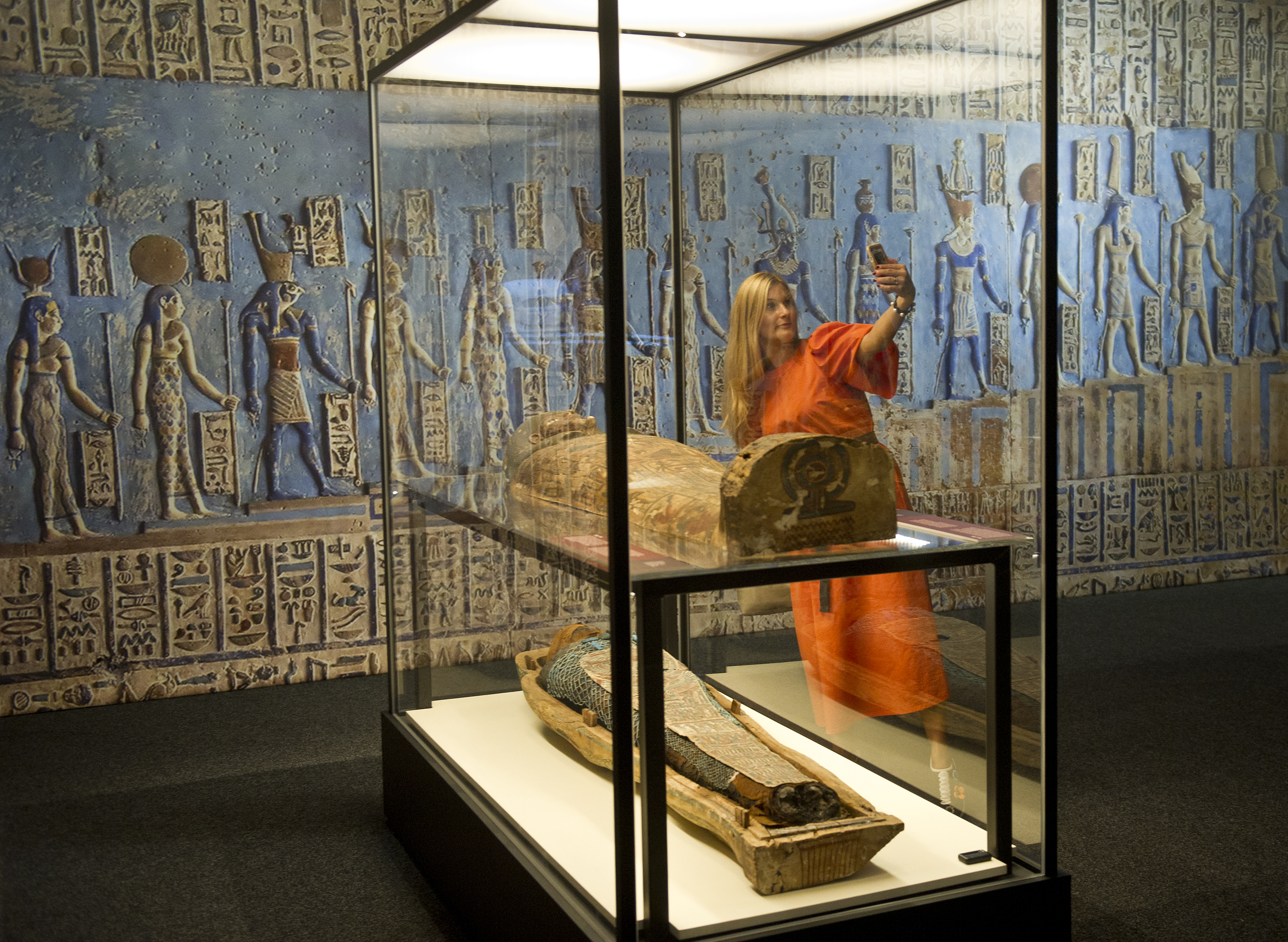Previously hosting the controversial Bodies show, this viewing space on Király utca now reveals yet another unmatched presentation to the Budapest public. Stories of bygone eras are brought to life for the Mummies of the World exhibition, displaying deceased bodies that were conserved naturally or using age-old practices, including embalming and wrapping the corpse in cloth. Some dating back thousands of years, these mummified remains serve as a base for a better understanding of history, society and nature’s unpredictable forces.
Whether it happens under scientific guidance or accidentally due to frost, desert heat or oxygen-free conditions, a human cadaver undergoing mummification procedures usually retains facial expressions and body parts, such as skin and hair. As an example of this natural preservation, former miller Mihály Orlovits, his wife and their one-year old child were part of 265 mummified bodies discovered at a church crypt in Vác two decades ago. Constant air circulation inside the catacomb helped the corpses remain relatively intact, still dressed in original clothing.
Another body on display that inadvertently survived complete decay belonged to German nobleman, Baron von Holz, and the aristocratic Schenk von Geiern, who sought shelter at Germany’s Sommersdorf Castle, fleeing the Thirty Years’ War. They were found in 1806, tucked away in the castle family crypt, the baron wearing his perfectly preserved leather boots.

There’s still mystery over the identity of a 300-year-old Transylvanian mummy, whose remains include his genitals, and well-groomed hair and beard.
Meanwhile, the exhibition shows plenty of examples of professional mummification procedures, too, a practice that started in South America 2,000 years before similar exercises were applied in ancient Egypt. There is a disturbing compilation of miniature heads, originating from early tribal members of Ecuador and Peru. These decapitated human heads were shrunk through cooking processes and later were carried around by members of a hostile tribe.
These were not the only bizarre traditions for preserving bodies. Described in documentation here, Buddhist monks in Japan used to mummify themselves while they were alive. To achieve this self-induced passing, they consumed a type of insecticide plant for 1,000 days to help keep parasites away even after death. As part of the self-exterminating process, they also retreated inside a narrow stone grave, where they stopped taking food and drink.

Air for breathing was provided through a thin tube and the monks used a small bell to indicate that they were still alive, its silence signalling death. Following the final ring, the grave was locked for another 1,000 days to help conservation. The overall mission to become mummified was accomplished by only a few, but those who succeeded were later honoured as saints and their bodies were displayed in churches. This suicide practice was then banned in the 19th century.

The exhibition also shows Egyptian mummies and part of the Burns Archive, the world’s largest collection of early medical photography. Visitors can also view the famous Maryland mummy, the first modern-day Egyptian mummy, a cadaver of an American man that was conserved using ancient techniques.

A separate area within the exhibition shows how mummy mania has been spreading worldwide. In the 19th century, mummies purchased on exotic trips were often unwrapped to join afternoon tea sessions with their new owners later. Some mummies were also powdered in the belief that the extracted particles could be used for medicinal purposes. This mummy powder was also an ingredient in paint, called the mummy brown, used by artists on paintings that now secretly carry a more distant legacy.




